|
I was facilitating a day long “Learning Dialogue” on the relevance of the Pandava archetypes in our world today centered around my book “Leadership Dharma, Arjuna the Timeless Metaphor” (http://www.raghuananthanarayanan.com/books.html).
“What is the relevance of the Pandava heroes and entrepreneurship?” a young participant wanted to know. More than half of the group comprised of young people and they were all very keen on discussing this question. I am sharing with you some of the key ideas that came up. But firstly, you must understand that we are speaking about personas within us in an idealized form so that the discussion leads to introspection and action in our lives. The intent is not to have a theoretical discussion about mythical characters. “Bhima with his restlessness and courage has to be the one who initiates new adventures” our young friend began the discussion. “He is the one who is moved by passion. He is willing to act in the face of danger, in fact, danger evokes him and brings out the best in him.” “Does he think through before acting?” was a question that engaged the group at this point in time. After looking at their own experiences, the group concluded that the ability to act first enter areas that others would think twice about venturing into was the defining characteristic of entrepreneurship. Bhima’s ability to inspire heroism and followership was seen as a great asset in the early days of a start up. The group then looked at what makes the start-up grow. “I guess the ability to create a team that is close knit and well bonded is a prime requisite to create a stable core.” “Well that requires the Nakula to come forward and hold the team together.” “I think I am a Nakula, and I have found Bhimas very difficult to work with. They keep extolling their strengths and are contemptuous of weaknesses. Trust is the glue that binds teams. The way each team member values the strengths of others is important, but how each team member holds the weaknesses and lacunae of the team-mates is crucial to creating a great team.” The Bhimas in the group fell silent for a few minutes. “Yes, I have felt lonely and anxious when I have had to face my lacunae. The worst thing that has happened to me when I felt weak was to be shamed for some thing that is a limitation.” “I am not suggesting that one indulges in self pity or in self deception, there is a time for action and a time for reflection and rejuvenation,” the Nakula offered. “When this balance is lost and the reciprocity of valuing is absent the group becomes brittle.” It was settled that the ability of Bhima and Nakula to work together was crucial to the process of building the team and holding the team together in tough times. “Soon we will need the solidity of a Yudhistra” “But what will he do? He is the boring administrator” this was a true Bhima speaking! “But, without the Yudhistra you Bhimas will gain territory without consolidation! The lesser-known side of Genghis Khan was his administrative brilliance? The moment he captured a city or a town he would make sure that a just administration was in place and laws were respected.” “Yes, come to think of it, Alexander never consolidated his gains the way the Mongols did” the Bhimas conceded. “Whether I like it or not, once I capture the market, I have to learn how to govern it, give space to and empower the ones who will ensure predictability and scalability.” “Let us see where Sahadeva fits in.” “He is the knowledge-builder is he not? So without him, one will not be able to create a knowledge bank and therefore, the future capability of the organization belongs to him.” “Yes, but, Sahadevas are not very action oriented and tend to procrastinate action till they are sure, so a Bhima will either get impatient with them, or tend to dismiss them as mere thinkers compared to the doers.” “I guess that's where the Nakula energy becomes key to creating a context for collaboration and mutual valuing.” “That makes sense, because, the Sahadeva can also be dismissive of the Bhima as some one who is driven by emotion and incapable of careful deliberation. He will simply withdraw into a shell.” “Where does an Arjuna fit into to all this?” Here the group went down many false trails. One strong idea was that Arjuna was the one full of focus, or that he listened to the words of the elders. When it was pointed out that narrow focus without perspective is a recipe for disaster the group went into a discussion about focus. A consensus was arrived at “focus in this context is the ability to persist with the dream and the chosen direction even when the current challenges become all absorbing.” I then had to place before the group the question “If an entrepreneur is entering a new field, can she find a mentor? What will she seek advice for?” After some fierce argument and some divergent thinking the idea that seemed to make sense was “An entrepreneur walks a new path so the final dialogue she has to have is with her own deeper self. She must trust her intuition, dig deep to find inner potentials that she has not deployed so far, and above all trust ones own judgment act with intensity.” “So, the Krishna she seeks is within” they concluded. At this point, I again asked a few key questions: “What made the battle ground (Kurukshetra) a ground where matters of Dharma were at stake (Dharmakshetra)? Why did Arjuna stop the war and ask fundamental questions? And why did he go through all the psychosomatic symptoms of stress at this point?” Discussing these questions was not easy, each of the participants had to delve deep within themselves to explore them. One of the participants who had gone through a difficult turn around situation in her organization some time back came up with a perspective “Organizations tend to forget basic questions like why they exist? What was the founding vision? What are the core values that have enlivened them? They get bogged down either in firefighting or in adhering to systems and policies. At this point it is important for an Arjuna to appear and ask fundamental questions. In doing what we are doing, what are we really doing? Why are we in business? Should we remain in this business and so on. These are paradigm shifting questions and shake the ground which most of us take for granted.” “Ah! So he is an entrepreneur too, but one who shifts the foundations” “And when one stops the whole system to ask these questions for which there are no ready-made answers, one has to bring oneself in completely and stake oneself both in the asking of questions for which one does not have answers and in searching for the answers in the context of a crisis.” “That is very difficult because it is stressful, and it is personal too.” “Yes, that's why deep personal integrity, and the ability to take on the stress and the anxiety of the group is important. If you remember, a Sthita Pragnya is described as one who can comprehend the whole situation and all its positive and negative dimensions without getting dislocated from the larger meaning purpose of the mission.”
3 Comments
When I googled Kanhaiya, I found only two prominent references: One to Kishen Kanhaiya, a movie and the other to Kanhaiya Kumar. Once upon a time, long long ago there was another Kanhaiya- the one who is an avatar of Vishnu. I wondered about him and the relevance of these (and other Kanhaiyas) to the idea of Nation Building. The First Nations of America seem to have held a notion of a nation: “a space where every member of the nation can act with honour and live in peace”. I like this idea. When Google threw up Kishen Kanhaiya the movie, it struck me that we need to add “and have fun” to this simple list. I am going to treat all these Kanhaiyas as metaphors. Shri Krishna (the original Kanhaiya) is the metaphor of a Nation defined by its Dharma, Kishen is the metaphor of a Nation defined by mundane pragmatism and, Kumar is the metaphor of a Nation defined by leftist ideology. There are many more definitions but let us begin by examining these three. Mridula Mukherjee in her speech at JNU (Lecture on National # 8- Mridula Mukherjee- Published on Feb 28, 2016) defines the Nation. The myth of origin starts with Ram Mohun Roy and his idea of civil liberty. It then proceeds to bring in Tilak and Gandhiji and so on. In her talk she refers to spontaneous uprisings of the ordinary people of India as though the evocation to protest for ones liberty, to protest oppression had suddenly descended on India. The spirit of the nation that “JNU has been chosen to stand up for” is leftist and modern; a creation of the British and our struggle for independence. So, what is the new JNU formulation of Nationhood really doing? It alludes to the idea that India was born in 1947, all narratives of nationhood should start from there. The idea of civil liberties is presented as a leftist ground, and all other narratives are to be interrogated or fought! The History of protest against oppression using peaceful means of non-cooperation called hartal has been recorded in our history many times. (http://ppstbulletins.blogspot.in/2011/10/note-on-disruption-and-disorganisation.html). Gandhiji seems to have drawn heavily on this cultural heritage. There is evidence to suggest that Gandhiji understood the institution of the Kumbh Mela and used this ancient process to disseminate his ideas of a Nation, and the need to stand up against the British. Many of the Akkadas had taken part in the 1857 struggle too. Also, both Tilak and Gandhiji relied on their understanding of the Gita and other ancient texts to formulate the idea of Bharat. The vernacular press that Ms Mukherjee eulogizes still refers to our Nation as Bharat. I wonder whether any acceptance of our Vedic heritage has a relevance to Nation building, or will it be dismissed as “rightist”? We also know that a strong theme that dominated the Muslim mind in the pre-independence struggle was the idea of the Caliphate, a religious Ummah. This too is an idea of Nationhood, albeit one founded on a religio-political imagination. In its most compassionate and ideal form, the covenants that the Prophet entered into with Christian groups in Sainai and other places defines the conditions under which such a nation nation would function. Its citizens would be given the opportunity to “act with honour and live in peace” so long as they accepted the primacy of the Muslim religion. This idea of the Ummah underpin the Daesh / ISIS today, and displays the most brutal opposite of the behaviours recommended in the covenants! The religio-political “Christendom” was the notion that evoked Europe to fight the crusades. The ideas like “Ram Janma Bhoomi” address themselves to this form of Nationhood. Was Ambedkars idea of a nation based on the Buddhist tenets, did he see the the Ashokan Empire as its golden period? Is Hindutva a home grown version of Christendom and the Caliphate? Was Tibet a compassionate form of this idea? In my fantasy, the average Indian who enjoys Bollywood is the subaltern who fills the streets when his idea of liberty is impacted. He watches the Ramayana and the Mahabharata as well as Kishen Kanhaiya, and in his own way, understands the dialogue that refers to an Arjuna or a Shakuni as jargon that allude to a whole universe in a conversation/ dialogue. He/she has a continuity of cultural imprint that underpinned the hartal of Banares. A whole town of residents spontaneously steeped out of their homes, congregated in a huge maidan to protest British policies (they were protesting the imposition of property taxes by the British in the early 1800’s- http://ppstbulletins.blogspot.in/2011/10/note-on-disruption-and-disorganisation.html). The various jati groups had their own demarcated areas, and managed a peaceful protest that lasted weeks! By the way, Tamil Sangam literature speaks about “Kootam” that was collected at cross roads to protest the actions of Kings who overstepped dharma. They even had the ability to overthrow a king! There is surely a powerful idea of Nationhood that is culturally determined.
The various tribal-ethnic ideas that pervade India may be closely related to the unconscious cultural mind sets. These passions erupt from time to time. States get formed through the fight for linguistic or ethnic identities demanding their rights. And within the larger Civic-Legal notion of a nation, these groups vie to create privileges based on jati affiliations (and a notion of backwardness!!). Late Dharampalji (a great Gandhian) asked a few questions to a few of us who were fortunate to have had many discussions with him: Can we become a great Nation by running behind the tails of the west? Can we become a great Nation by indulging in self-hate? Can we become a great Nation by disowning our negatives? He would often say that since we cannot lobotomise a part of our brains, and replace it with an ideal brain, we must engage with ourselves and our reality to discover our genius and deploy it. He emphasised that the idea of time and space that the common man held is very different from that of a westernised oriental gentlemanJ For example, Sanjeev Sanyal traces the history of India through her geography, and the River Saraswathy flows right through the narrative in ways that are very evocative. He seems to succeed in writing a narrative that is not based on the history of Kingships but on the impact of geographical events, human endeavours to manage the inevitables of life and the growth of technology. He speaks of how many of these heroic human responses are held in peoples minds, through songs, written records and through folk narratives. IMHO, there are many conceptions of a Nation: firstly the idea rooted in identicality of race- The Germanic tribes become Germany, the British Isles is still trying very hard to create an idea of a Nation called the United Kingdom that makes sense to the Welsh, the Scots and the Irish. Secondly, an idea rooted in linguistic identity- Tamil Nadu, or Karnataka for instance. Thirdly an idea rooted in religious identity- the Ummah that was enunciated by the Prophet. Fourthly, an ideological ground, the communist nations base themselves on this notion. The capitalists who give themselves permission to collectively plunder the rest of the world, a la US of A, are also based upon an ideology seemingly different. Fifthly, a purposive and legal frame work of civil liberties and limitations, these are what democracies aim to be. And lastly, a cultural ground that unites a people which I believe is the underpinning of “India that is Bharat”. Then there are people who are the ‘idiots’ (I learnt recently that the greek term idiotes- private individuals, meaning people who cannot think beyond them selves!) who live among the public (from the greek publica- devoted to things that are shared) that strive to create a nation in which they can “act with honour and live in peace”. These ‘idiots’ foster corruption in a myriad ways and when they come into positions of power, they exploit and rape both other human beings and the earth. Perhaps many of these people will trace the idea of their Nation from the time of the liberalization of the Indian Economy? Or they may have a very ancient lineage too. Ones utopian hope is that a notion of dharma- enlivening the world and all its beings can be the central notion of a Nation. This is the idea put forth by Shri Krishna. The key prerequisite for such a notion to be understood and valued is the ability of every one of its members to commit to the well being of the whole before the self interest of the parts are given space. IMHO, this is what the word democracy implies, not the farce of manipulating votes through misinformation, opacity and pandering to sectarian interests by idiotes who have honed the skills of public posturing and private predation. A friend sent me the following piece by Tarek Fateh with a suggestion that we 'Hindus' ought to do some thing about it.
I have mulled over it for a couple of days. I think I would rather let this guy rant than get caught with his provocation. I don't know what your response might be. So read it and then read on. Pakistan born Canadian writer Tarek Fateh on ABP News:
"When will you have the guts?" A small digression into how I felt about the film Avatar then we will get back to this discussion: "On the lush alien world of Pandora live the Na'vi, beings who appear primitive but are highly evolved. Because the planet's environment is poisonous, human/Na'vi hybrids, called Avatars, must link to human minds to allow for free movement on Pandora. Jake Sully (Sam Worthington), a paralyzed former Marine, becomes mobile again through one such Avatar and falls in love with a Na'vi woman (Zoe Saldana). As a bond with her grows, he is drawn into a battle for the survival of her world." (the synopsis on the net). I enjoyed the film Avatar until at the end, the Na’vi are shown as capable of savagery in response to the provocation of the humans. I hated this ending. What would I have liked to see? The Na’vi understand why Jake Sully is being sent among them. Like they have done to many civilizations earlier, the humans will extract the knowledge/ resources they want and then destroy their world. So they decide to concentrate their energies and draw all the “life loving” forces of the world into their world. The human world starts to dry up, and the Na’vi world becomes luminescent, and impenetrable, only beings with an intense commitment to life and compassion can enter. As the process become more powerful, the few humans who love life are drawn to the Na’vi world. The others who are committed to technology and power find that the world from which they extract their raw materials, water and food is disintegrating. There are no new flowers in spring, no birds to kill and no animals to hunt down. As summer turns to Autumn, their environment has become completely dry and in winter the elements have returned to their separate state, no life forms can survive. Now that my stance is clear, let me share to my hypothesis about the rant: Non Dharmic minds cannot understand ahimsa, they cannot comprehend the beauty of freedom from dogma and external authority. The depth of commitment to life that ahimsa requires is foreign to them, the sense of responsibility that the psychological freedom offers scares them. That is why they “other” the Indic religions and both hate and envy them. There is a visceral need to destroy them, to blow the Bhamian Buddha to smitherings, destroy temples and so on. There are two ways of destroying the Dharmic mind- one by making them forget their grounding in ahimsa and freedom through provocation and through shaming them for these very virtues they value. Second, to physically kill and murder. They have succeeded to some extent, but a thousand years of this process has not made a very deep dent. I hope this resilience lives on. I some times loose hope though. Most of the Westernized Indians I have met, like this friend who sent me this mail, have lost touch with the well spring of Dharma, they often hold our tradition in ambivalence and secretly feel ashamed for being who we are. I wonder what they really feel about Gandhiji and Satyagraha, or about the Buddha. I hope sincerely that they do not get provoked either by the acts of terror or the shaming of these people who are held in the grip of authoritarian dogma and life hating ideology. I do hope that there are enough of us left to do what in my story the Na’vi did: go inward and find the Shakti that Shri Aurobindo and the Yoga Sutras talk about, and through this Integration of one self first and then of similarly committed others, create a compelling alternative. IMHO, Gandhiji and Mandela have shown the power of this path. I will not walk the way of violence. I may not succeed in discovering the depth of energy needed for Satyagraha, but I will die trying. |
Raghu's BlogMy work revolves around helping individuals, groups and organizations discover their Dhamma, and become “the best they can be”. This aligns with my own personal saadhana. I have restated this question for my self as follows: “how can I be in touch with the well spring of my love for the world and my love for my self simultaneously” Archives
October 2017
Categories |
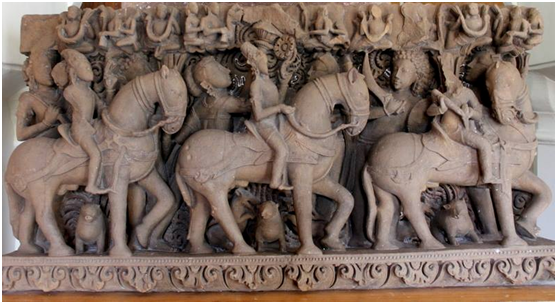
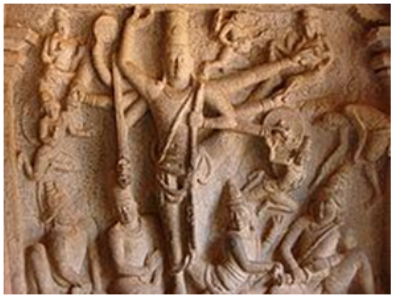
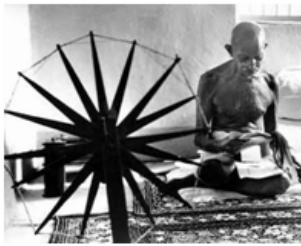
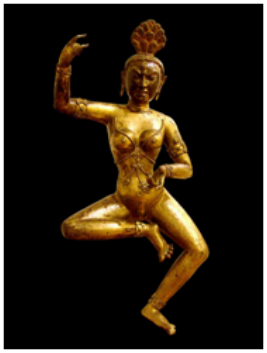
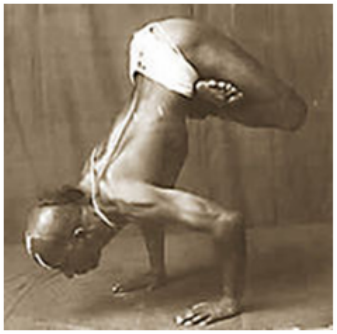
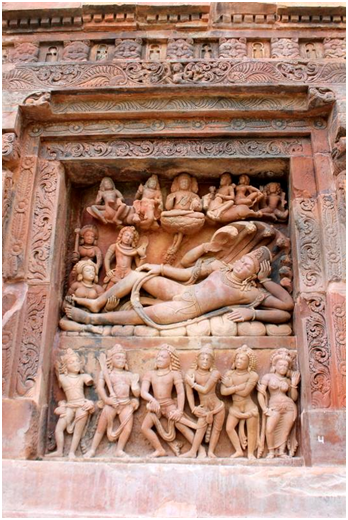
 RSS Feed
RSS Feed
